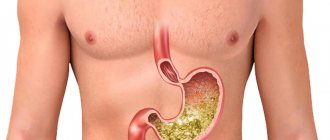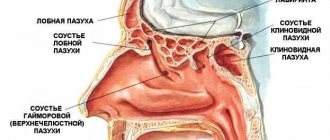- Why do you feel sick in the morning?
- Causes of nausea after eating
- How to determine the exact cause of nausea?
- What to do if the gastroenterologist did not identify any violations?
- Treatment
Nausea, a feeling of heaviness in the stomach, heartburn are familiar to everyone. If you overeat on fatty delicacies at the holiday table, unpleasant sensations will not take long to appear. Drank expired kefir or too much alcohol - nausea is right there. The reasons are simple and clear. In the first case, there were not enough enzymes to digest food, and the liver had to work at its limit. In the second, toxic substances entered the body, causing poisoning. These symptoms are unpleasant, but they are temporary. And, as a rule, they pass after a few days or even hours. But what to do if you feel sick all the time? We need to figure out the reasons!
Nausea, vomiting in women (including during pregnancy)
Nausea and vomiting, along with a throbbing headache, depressed mood, increased sweating and numbness of the hands, characterize the cephalgic form of premenstrual syndrome (PMS).
At the same time, blood pressure remains within normal limits. Unpleasant symptoms occur 2-10 days before menstrual bleeding in women with irregular cycles, a history of abortion or depression. Considering that the nervous system in women is more excitable than in men, nausea and vomiting during menstruation can be triggered by any unpleasant odor. Often, prolonged nausea without vomiting in women is a consequence of following a strict diet for a long time. The use of dubious food additives, a lack of essential microelements and vitamins, and the abuse of laxatives leads to chronic stress and disruption of the digestive tract. In addition to this, dysbacteriosis develops. The feeling of nausea goes away only after the intestinal microflora is normalized.
Nausea for no apparent reason is often the first sign of pregnancy. The unpleasant sensation is associated with a sharp increase in the level of the hCG hormone. Further hormonal changes in the female body, changes in metabolism and psychological stress often provoke vomiting 1-2 times a day, more often in the morning. The state of health returns to normal by the 13th week of pregnancy.
Early toxicosis (before 16-18 weeks of pregnancy)
- Mild degree - vomiting up to 5 times a day, the condition of the pregnant woman is satisfactory, the fetus is not in danger.
- Early toxicosis of moderate severity - vomiting up to 10 times a day, weight loss up to 3 kg, rapid pulse (up to 100 beats/min), acetone in the urine.
- Excessive vomiting of pregnancy (grade three) - vomiting up to 25 times a day, weight loss of more than 5%, dehydration and electrolyte imbalance. Immediate medical intervention is required.
Important! Severe vomiting in early pregnancy may indicate a hydatidiform mole.
Regularly occurring nausea and vomiting in late pregnancy makes one suspect the development of preeclampsia, the third stage of late toxicosis (preeclampsia). This condition is preceded by the appearance of swelling of the limbs and face (stage 1), increased a/d and protein in the urine (nephropathy, stage 2 of gestosis). Without timely treatment of preeclampsia, seizures (eclampsia) develop and the risk of stroke is high. For the fetus, late toxicosis is fraught with hypoxia, delayed development and perinatal pathologies. There is a high risk of placental abruption and premature birth.
Important! Nausea and vomiting in a pregnant woman can also be caused by taking iron supplements to treat anemia, common gastroenteritis, or another disease.
Reason No. 1. Nerves are to blame
More precisely, the peculiarities of the interaction between two parts of our nervous system - the sympathetic, which is responsible for muscle activation and reaction, and the parasympathetic, which is responsible for breathing, pressure, and the functioning of internal organs. The latter begins to work actively as soon as the body receives food. Its task is to protect us from stress and stress while the digestion process is underway. Therefore, after eating, the muscles reflexively weaken, the heart rate decreases, a state of rest and relaxation occurs, that is, the same processes occur as before sleep.
Solution:
do not schedule important meetings, stressful negotiations and other stressful things in the first half hour after lunch.
Nausea and vomiting in children
Frequent regurgitation of infants in most cases is caused by gastroesophageal reflux (reflux of food into the esophagus due to incompetence of the lower sphincter). However, this condition has nothing to do with vomiting. A one-time gag reflex against the background of a normal general condition also does not require special attention. Repeated vomiting in a newborn often indicates illness.
- Pyloric stenosis (manifests at 3-12 weeks) - vomiting “fountain” soon after finishing feeding. Unlike systemic diseases, vomiting with pyloric stenosis does not contain bile, and the baby sucks the breast with appetite.
- Intestinal obstruction - occurs due to intestinal atresia, obstruction of the ileum by extremely viscous meconium (meconium ileus), volvulus, or intestinal stenosis. From the first days the baby suffers from vomiting, and the general condition rapidly deteriorates.
- Intussusception (3-36 months) - often caused by viral enteritis and leads to intestinal obstruction. Attacks of severe abdominal colic and vomiting every 15-20 minutes lead to ischemia of the intestinal area, gangrene and perforation.
Nausea and vomiting in a child can be caused by unusual foods, nervous stress and various odors.
The main causes of vomiting in older children:
- viral/bacterial gastroenteritis - often occurs with diarrhea and fever;
- influenza, acute respiratory infections, childhood infections (for example, scarlet fever) - against the background of a high temperature, the child often develops vomiting and convulsions are possible;
- helminthic infestation - the child complains of nausea without vomiting, the parents note that the child has bad breath, rumbling in the stomach, itching in the anus and grinding of teeth at night;
- errors in nutrition - too fatty, spicy or fried foods provoke nausea, diarrhea and sometimes vomiting without fever;
- appendicitis - pain can begin in the stomach, near the navel or lower in the right side, the child becomes lethargic and drowsy, any painkillers for abdominal pain are strictly prohibited;
- poisoning with drugs and household chemicals - often causes an extremely serious condition, the symptoms depend on the toxic substance;
- sunstroke (heatstroke) - when overheated, the body temperature rises to 40ºC, the skin turns red and sweats significantly, nausea/vomiting and headache occur, breathing and heart rate increase;
- taking antibiotics almost always provokes intestinal dysbiosis (feeling of nausea after eating without vomiting, loss of appetite, constipation/diarrhea). To maintain intestinal microflora, antibacterial courses are combined with the intake of probiotics.
Why does heartburn occur after eating?
The condition of heartburn is closely related to food, as the condition provokes the reverse movement of food from the stomach into the esophagus1. The walls of the stomach are protected from the irritating effects of acid in gastric juice. And the coating of the esophagus is very gentle and is not designed to withstand exposure to an aggressive environment. Therefore, a food bolus from the stomach irritates the walls and can even cause burns3.
The main causes of heartburn after eating:
- eating large amounts of food at once;
- food at night;
- sleeping or lying down after eating;
- preference for fried, hot, spicy, fatty foods;
- consumption of certain foods that provoke the production of acid in the stomach;
- excess weight;
- pregnancy;
- wearing tight belts;
- smoking;
- lifting heavy objects and bending over after eating2.
Most often, the condition develops 15-30 minutes after eating2. If a person has constant insufficiency of the sphincter between the stomach and esophagus, then the connection with food may not be traced. In such people, heartburn may occur even at night due to the horizontal position3.
Even a healthy person may periodically experience a burning sensation behind the sternum due to the reflux of stomach contents. But this does not mean that no measures need to be taken to alleviate the condition.
Nausea and vomiting with coronavirus
Severe complications and high mortality with COVID-19 force us to more carefully study the first symptoms of the disease. The difficulty lies in the fact that the virus rapidly mutates, and the clinical manifestations of the disease also change. In 2021, typical symptoms of coronavirus infection were fever, loss of smell and taste, muscle pain, and only then a cough. Only some patients experienced nausea and vomiting a little later. In 2021, the majority of cases are caused by the Indian strain of COVID-19, which is characterized by higher infectiousness and a “stomach” syndrome. Against the background of fever and catarrhal symptoms (runny nose, sore throat, cough), every third patient with coronavirus experiences nausea/vomiting and pain in the stomach. A little later, diarrhea and hearing problems appear, and the sense of smell disappears less often.
The "Delta" strain most often affects young people and children. And previously worked out treatment regimens give a noticeably less effect. This is why vaccination of the population, including those who have previously had coronavirus, is so important. Although a two-time vaccination does not completely eliminate infection, it will help avoid severe disease, complications and death. Among the sick, the percentage of vaccinated people does not exceed 1%.
Important! Nausea after vaccination against coronavirus occurs in every tenth vaccinated person. Vomiting is a rare side effect. All unpleasant consequences of the vaccine disappear within 3 days.
What to do if the gastroenterologist did not identify any violations?
It also happens that after an examination, the gastroenterologist tells the patient that no pathologies have been identified on his part. However, such good news does not mean that the person who came with complaints is in great health.
The etiopathogenesis of nausea may be associated with:
- vascular pathologies;
- hypertension;
- diseases of the inner ear;
- endocrine disorders;
- pathologies of the brain and central nervous system;
- head injuries and post-traumatic syndromes;
- viral, bacterial and parasitic infections (often not related to the gastrointestinal tract, but affecting the lungs, ENT organs, and central nervous system).
Specific features of nausea and vomiting
To identify the cause of poor health and assess the patient's condition, the duration of nausea and vomiting is important. Acute vomiting (1-2 days) is often caused by medications, infections, poisoning (such as alcohol), kidney damage, and diabetes. Chronic vomiting (more than 1 week) is characteristic of long-term gastrointestinal diseases and mental disorders.
Features of vomiting and nausea
- Vomiting immediately after eating is characteristic of stomach lesions. If the gag reflex occurs 2-3 hours after eating, pathology of the duodenum is possible.
- Nausea and vomiting of acid are observed with gastritis with increased secretion and stomach ulcers.
- Vomiting of bile (greenish-yellow color) is caused by pathology of the hepatobiliary system (liver, gallbladder) or pancreas.
- Bloody vomit (red or brown) indicates gastrointestinal bleeding.
- Vomiting mucus is characteristic of diseases of the respiratory system (smoker's bronchitis), which occurs with a debilitating cough. Patients with alcoholism often complain of foamy vomiting in the morning (on an empty stomach).
- Vomiting with fever indicates the infectious nature of the disease. With a viral infection, the temperature can reach 39-40ºС. Nausea, vomiting and temperature up to 37.5-37.8ºС are more typical for bacterial infections.
- Vomiting with diarrhea/constipation without fever suggests an intolerance or allergy to certain nutrients, such as lactose.
- Constant nausea without vomiting and fatigue often occur with hypothyroidism.
- Vomiting and pain in the upper abdomen makes it necessary to exclude myocardial infarction, but is more often associated with gastrointestinal pathology.
- Fecal vomiting (dark vomit with a characteristic smell of feces) occurs with intestinal obstruction, tumors, and gastrointestinal fistulas.
What can interfere with digestion?1
- Nutrition.
Frequently skipping meals, replacing a full meal with snacks on the go and dry food. The habit of eating quickly, biting but not chewing food. We can talk about an eating disorder when, first of all, products with low nutritional value are chosen - confectionery and bakery products. - Eating fatty foods or incompatible foods.
- Diet monotony.
Potatoes and pasta have low nutritional value. Meat is replaced with refined meat products - sausages, sausages, dumplings. Vegetable dishes and greens are used in insufficient quantities. Difficulty and reluctance to prepare dishes such as soups. Consumption of hot spicy foods, carbonated drinks, alcohol. - Bad habits,
such as smoking. - Previously suffered intestinal infections
can also leave their mark on the functioning of the digestive tract. - Neuropsychic and social factors.
Psycho-emotional stress and inability to cope with life's difficulties. The connection between digestive disorders and mental disorders such as depression, anxiety and neuroticism. - Taking non-steroidal anti-inflammatory drugs.
When medical attention is needed
Call an ambulance if nausea/vomiting is accompanied by:
- severe or increasing abdominal pain;
- chest pain;
- high temperature;
- neck muscle tension;
- anuria (lack of urine, less than 100 ml per day);
- confusion, unconsciousness;
- dehydration;
- numbness and paralysis of the limbs, asymmetrical smile and speech problems;
- vomiting feces or blood;
- uncontrollable vomiting.
Make an appointment with a doctor at the First Family Clinic of St. Petersburg if:
- in an infant, vomiting does not stop for 12 hours, in a child under 2 years old - 24 hours, in an adult - more than 2 days;
- nausea and vomiting occur at least once a week for 1 month;
- nausea and vomiting are accompanied by weight loss.
Treatment of heaviness in the stomach associated with diseases of the gastrointestinal tract
If discomfort in the epigastric region bothers you periodically and is accompanied by other symptoms, then you should definitely seek qualified help from a gastroenterologist.
Even before an accurate diagnosis is established, the doctor recommends lifestyle and diet adjustments and prescribes certain medications. After determining the cause of heaviness in the upper abdomen, the specialist determines a therapeutic diet, and also recommends a specific combination of drugs, dosage regimen and duration of therapy. To get rid of stomach discomfort and accompanying manifestations of diseases, groups of medications are used.
- Enzyme preparations. Contain enzymes (amylase, lipase, protease) that are involved in digestion. Recommended for pancreatic dysfunction.
- Prokinetics. Helps normalize the motility of the gastrointestinal system.
- Antacids. Topical compounds that neutralize hydrochloric acid. Mainly used for insufficiency of the cardia and pylorus.
- Agents that reduce the production of hydrochloric acid. These include proton pump inhibitors, H2-blockers and M-anticholinergics. Prescribed for hyperacid gastritis, gastric and duodenal ulcers.
- Drugs that increase gastric secretion, they contain pepsin and acids necessary for atrophic gastritis.
- Gastrocytoprotectors. Medicines that protect against the effects of adverse factors and promote the healing of damaged areas of the walls of the digestive organs. These include analogues of prostaglandin E and bismuth salts.
- Antibiotics. They are part of complex therapy for the destruction of Helicobacter pylori.
- Drugs that affect the secretion and excretion of bile. Used for diseases of the liver and biliary tract.
- Laxatives. Recommended for constipation of various etiologies.
Diagnostics
Patient examination
- Assessing the degree of dehydration.
- Determination of symptoms of acute surgical pathology.
- Neurological status, assessment of clarity of consciousness.
Recommended tests
- Blood tests (general, biochemistry, thyroid hormones, sugar levels).
- General urine test and pregnancy test.
- Stool analysis (coprogram, worm eggs, culture).
Recommended Research
- Ultrasound of the abdominal cavity and endoscopy.
- X-ray and colonoscopy.
- CT/MRI of the intestine, brain.
Treatment
Therapeutic tactics depend on the causative disease, the presence of accompanying symptoms of nausea/vomiting and the general condition of the patient.
- Treat dehydration and electrolyte imbalance with oral medications or IV infusions.
- Antiemetics. In severe cases, the use of 5-HT3 receptor antagonists and corticosteroids is acceptable.
- Causative therapy aimed at eliminating the causative disease.
Self-administration of various tablets for nausea/vomiting is not recommended. Only a doctor, after conducting the necessary research, will determine the cause of poor health and prescribe effective and safe treatment.
Reason No. 5. Excess tryptophan is to blame
Some foods are rich in tryptophan, an amino acid that helps produce the hormones serotonin and melatonin. These hormones are responsible for relaxation, joy and restful sleep. A little different from what is expected of us in the middle of the working day, right? For example, bananas, cheese and cottage cheese, legumes, meat, and mushrooms can provoke drowsiness. Melatonin is also found in almonds and walnuts, and fatty fish.
Solution:
reschedule tryptophan-rich foods for dinner or the weekend, when you can relax and take a nap after lunch.
How to relieve nausea and vomiting at home
- Drink more fluids. The daily intake for adults is 30 ml/kg body weight. It is advisable to use decoctions of chamomile and mint. Drink slowly, in small sips. You should not drink only after bloody vomiting.
- Eat small meals. Food should be warm. Avoid hard, fried, spicy, fatty and sweet foods. But if you experience uncontrollable vomiting, you should refuse to eat.
- If an unconscious patient is vomiting, turn the head to the side to avoid aspiration.
- If you have severe nausea, you should lie down. Open windows for fresh air. Avoid strong odors and other irritants. Do not brush your teeth immediately after eating.
- If you suspect poisoning (vomiting and diarrhea), you can take activated carbon (1 tablet per 10 kg of weight), smecta, phosphalugel or polysorb.
- Measure your blood pressure. If the readings are high, take an antihypertensive drug prescribed by your doctor or call an ambulance.
- For low blood pressure, it is enough to drink a cup of tea or coffee and sniff ammonia.
- For motion sickness, it is permissible to take antihistamines or special medications (for example, Dramamine).
If nausea or vomiting continues for more than 2 days and your general condition is affected, you should consult a doctor. At the First Family Clinic of St. Petersburg, you will undergo all the necessary tests and instrumental studies in order to quickly identify the cause of the disease and prescribe effective treatment.
Literature used in writing
- "Gastroenterology - National Guide" (2008). Authors: Ivashkin V.T., Lapina T.L.
- “Diseases of the digestive system in pregnant women. Gastroenterology" (2011). Author: Eremina E.Yu.
- "Manual of Gastroenterology, Volume 1" (1995). Authors: Komarov F. I., Grebenev A. L.
- “Gastroesophageal reflux disease in children” (2007). Authors: Prokhorova L.I., Davydova A.N.
- “Inflammatory bowel diseases” (a practical guide for doctors, 2012). Author: Sitkin S.
Nausea is a painful sensation in the stomach and throat, which may be accompanied by weakness, increased salivation, sweating and often precedes vomiting.
Vomiting is a sudden, involuntary emptying of the stomach.
Nausea and vomiting are symptoms of many diseases and conditions, from pregnancy to such serious pathologies as brain tumors, epilepsy and myocardial infarction.
In most cases, nausea and vomiting do not pose a danger to the body. However, prolonged vomiting, often in combination with diarrhea, can lead to severe dehydration and, as a result, disruption of the cardiovascular system, brain, kidneys and other organs. This is especially true for young children who cannot control the manifestations of dehydration themselves. Pregnant women may experience so-called hyperemesis gravidarum, which disrupts the balance of electrolytes in the blood and threatens the life of the mother and fetus.
There are medications that can help reduce nausea. However, in any case, it is necessary to find out its cause.
English synonyms
Nausea, emesis, vomiting, vomitus, distaste, sickness, retching, bdelygmia.
Symptoms
The duration of nausea and vomiting, the time of their occurrence, and the effect of food intake on them depend on their underlying cause. For example, nausea and/or vomiting almost immediately after eating may indicate gastritis (inflammation of the gastric mucosa), and within 1-8 hours after eating - poisoning.
With prolonged vomiting, signs of dehydration may occur:
- dry mouth;
- thirst;
- sunken eyes;
- infrequent urination, decreased amount of urine, dark colored urine;
- In children, the fontanelle, a soft area at the junction of the child’s cranial bones, which normally closes by 12-18 months of life, may become sunken.
There are also a number of symptoms that are signs of dangerous, life-threatening conditions and require immediate medical attention:
- blood in the vomit;
- severe headache, disorientation, impaired consciousness;
- abdominal pain;
- signs of dehydration;
- dyspnea;
- vomiting that lasts longer than a day (for children - if it lasts several hours, especially in combination with diarrhea and fever).
Most often, vomiting and nausea disappear within 6-24 hours. If these symptoms recur within a week and if you suspect a possible pregnancy, you should also consult a doctor.
General information about the disease
Nausea occurs when there is a decrease or absence of gastric peristalsis with simultaneous tension of the initial part of the intestine - the duodenum, which is accompanied by the reflux of part of the contents of the duodenum into the stomach. When vomiting, there is a strong contraction of the diaphragm and muscles of the anterior abdominal wall, holding the breath and a sharp release of stomach contents into the esophagus and further into the oral cavity. This may be accompanied by increased salivation, sweating, weakness, and dizziness.
Specific centers in the brain are responsible for the occurrence of nausea and vomiting, which receive information from the gastrointestinal tract, vestibular apparatus, other parts of the brain, kidneys, and also react to the chemical composition of the blood, including toxins, medications, foods metabolism. These centers trigger and control the activity of the muscles involved in nausea and vomiting.
The causes of nausea and vomiting may be the following.
- Irritation of the gastric mucosa. In this case, nausea and vomiting are protective reactions of the body aimed at eliminating the damaging agent.
- Intestinal infections - rotavirus, salmonellosis, botulism, dysentery, etc. - in addition to nausea and vomiting, are accompanied by abdominal pain and fever. The most common infection is rotavirus. It is especially common among children attending kindergartens and nurseries, and occurs with nausea, vomiting, and diarrhea, which usually lasts 1-2 days. After the disease, immunity is formed.
- Food poisoning. In this case, vomiting occurs within several hours after eating.
- Stomach ulcer is damage to an area of the gastric mucosa under the influence of gastric juice. May be accompanied by belching, heartburn, and abdominal pain.
- Gastroesophageal reflux disease is a chronic disease in which there is a regular reflux of stomach contents into the esophagus with damage to the esophageal mucosa by acidic gastric juice.
- Irritation of the stomach by other substances: alcohol, nicotine, aspirin.
- Effects on the central nervous system and vestibular apparatus. In this case, nausea and vomiting are caused by irritation of certain centers of the brain.
- An increase in intracranial pressure due to brain injuries, tumors, infections (meningitis, encephalitis) may be accompanied by nausea and vomiting.
- Stimulation of the vestibular apparatus. Includes labyrinthitis (inflammation of the inner ear), motion sickness and other diseases and conditions in which excessive irritation of the balance organ occurs.
- Headache, particularly with migraine. Migraine is a neurological disease accompanied by severe headache, usually on one side, which can be aggravated by bright light or loud sounds and combined with nausea and vomiting.
- Sunstroke. A condition that occurs when the head is exposed to sunlight for a long time. Often found in children. May be accompanied by lethargy, weakness, nausea, vomiting, pallor, disorientation, and loss of consciousness.
- Diseases of other organs - diabetes mellitus, urolithiasis, hepatitis, pancreatitis, some malignant neoplasms, mental illnesses (depression, anorexia, bulimia) and other diseases.
- Medicines used to treat cancer, radiation therapy.
- Pregnancy (first trimester).
- In children under one year of age, vomiting can be a sign of pyloric stenosis, intussusception, and often accompanies viral diseases (influenza, ARVI). Pyloric stenosis is a narrowing or complete obstruction of the opening between the stomach and duodenum. Intussusception is a condition in which a piece of intestine becomes embedded in the lumen of an adjacent section of intestine, leading to the development of intestinal obstruction.
In adults, the most common causes of vomiting and nausea are intestinal infections, food poisoning, motion sickness in transport, in children - intestinal infections, food poisoning, overeating, as well as a severe cough and any illness with a high fever.
Who is at risk?
- Preschoolers.
- Pregnant women.
- undergoing antitumor therapy.
- People with chronic diseases of the digestive system.
- People with mental illness.
Diagnostics
When determining the cause of nausea and vomiting, their duration, time of their occurrence, and the presence of signs of other diseases and conditions are important. Laboratory and instrumental studies are also important.
Laboratory diagnostics
- General blood analysis. An elevated white blood cell count may indicate an infection as a possible cause of nausea and vomiting. An increase in the number of red blood cells indicates blood thickening due to dehydration.
- ESR. Erythrocyte sedimentation rate. Normally, red blood cells repel each other. During inflammation, the protein composition of the blood changes, electrolytes stick together more easily, and the rate of their sedimentation increases. Thus, an increase in ESR may indicate infection or chronic inflammation as a possible cause of nausea and vomiting.
- Blood electrolytes
- Serum potassium and sodium. Participate in the transmission of nerve impulses, muscle contraction, and maintaining the acid-base balance of the blood. Decreased serum potassium and sodium levels may indicate blood thickening and dehydration. Sodium levels may increase with kidney disease or adrenal dysfunction.
- Serum calcium. Calcium is involved in the formation of bone tissue, the conduction of nerve impulses, and the work of certain enzymes. A change in its level can be a sign of diseases of the kidneys, thyroid gland, parathyroid glands, and some neoplasms.
- Serum glucose. Glucose is the main source of energy in the body. An increase in its concentration is characteristic of diabetes mellitus. A significant increase in its level may indicate diabetic ketoacidosis, a severe, life-threatening condition that occurs when there is a lack of insulin. Without insulin, the body's cells cannot use glucose for energy. As a result, the body begins to use fats, the breakdown of which produces toxic substances - ketones. Thus, the level of glucose and ketones in the blood increases. Diabetic ketoacidosis can lead to coma or even death if not treated promptly.
- Total amylase in serum. This is an enzyme that is produced in the pancreas and salivary gland. Necessary for digesting carbohydrates. An increase in amylase levels may indicate a pathological process in the pancreas.
- Lipase. An enzyme that is produced in the pancreas and is involved in the digestion of fats. Elevated lipase concentration is the most specific sign of pancreatic damage.
- The β-subunit of human chorionic gonadotropin (beta-hCG) is a hormone that is produced by the membrane of the embryo and is involved in maintaining pregnancy. A beta-hCG blood test is used to diagnose pregnancy. Home pregnancy tests are also based on determining its amount in urine, but determining its level in the blood is more reliable and can detect pregnancy already on the 6-8th day after fertilization.
- General urine analysis with microscopy. Dark, concentrated urine can be a sign of dehydration.
- Sowing feces on flora. Used if an intestinal infection is suspected.
Other studies
- Ultrasound examination (ultrasound), x-ray of the abdominal organs. They are used to assess the condition of internal organs and identify the cause of nausea and vomiting.
- X-ray, computed tomography (CT), magnetic resonance imaging (MRI) of the skull. Used to diagnose injuries and brain diseases.
- Endoscopic examination of the gastrointestinal tract. This is an examination of the digestive organs using an endoscope - a special tube-shaped device equipped with an optical system. During endoscopy, a tissue sample from the wall of the digestive tract can be taken for subsequent microscopic examination.
- Lumbar puncture for suspected diseases of the central nervous system. This is taking a sample of the fluid that surrounds the spinal cord. Performed after anesthesia. For the study, a needle is used, which is inserted between the second and third or third and fourth lumbar vertebrae. At this time, the patient sits or lies on his side, with his back bent as much as possible.
- Audiometry and electronystagmography. Used to diagnose diseases of the vestibular apparatus. Audiometry is a test performed by an audiologist to determine hearing acuity. For this purpose, a special audiometer device is used. Electronystagmography is a method for recording involuntary movements of the eyeballs during head movements and temperature changes, which provides information about the state of the vestibular apparatus.
- Electroencephalography (EEG) is a study of the electrical activity of the brain using sensors placed on the head. It is carried out if a neurological or mental pathology is suspected. This is how the state of the brain and its reaction to stimuli are assessed.
Treatment
Treatment depends on the underlying cause of nausea and vomiting. There are also ways to help reduce these symptoms and prevent dehydration:
- drink slowly, in small sips;
- eat in small portions, do not mix cold and hot foods, exclude fatty, spicy, sweet, fried foods;
- do not eat during an attack of nausea;
- do not brush your teeth immediately after eating;
- Avoid physical activity immediately after eating.
In addition, there are antiemetic drugs, but they should be used only as prescribed by a doctor after the cause of the unpleasant symptoms has been established.
Prevention
- Eating only fresh, properly processed foods.
- Proper diet, especially for diseases of the gastrointestinal tract.
Recommended tests
- General blood analysis
- Erythrocyte sedimentation rate (ESR)
- Serum potassium
- Serum sodium
- Serum calcium
- Serum total amylase
- Lipase
- Serum glucose
- Beta subunit of human chorionic gonadotropin (beta-hCG)
- General urine analysis with microscopy
- Potassium in daily urine
- Calcium in daily urine
- Stool culture for pathogenic flora (disease group and typhoid-paratyphoid group)
- Cytological examination of material obtained during endoscopy (FGDS, bronchoscopy, laryngoscopy, cystoscopy, sigmoidoscopy, colonoscopy)
- Cytological examination of punctates, scrapings of other organs and tissues









